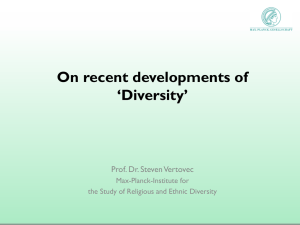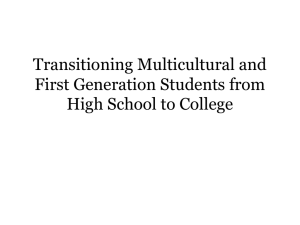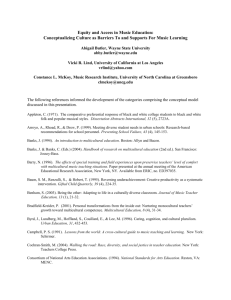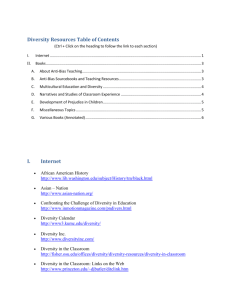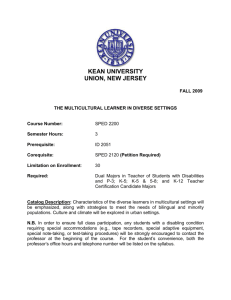Lillian Comas-Diaz and Fred Jacobsen
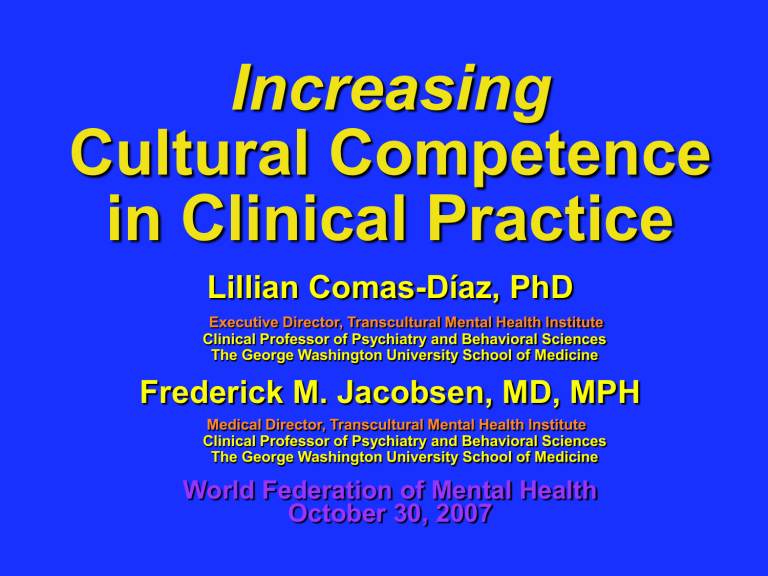
Increasing
Cultural Competence in Clinical Practice
Lillian ComasDíaz, PhD
Executive Director, Transcultural Mental Health Institute
Clinical Professor of Psychiatry and Behavioral Sciences
The George Washington University School of Medicine
Frederick M. Jacobsen, MD, MPH
Medical Director, Transcultural Mental Health Institute
Clinical Professor of Psychiatry and Behavioral Sciences
The George Washington University School of Medicine
World Federation of Mental Health
October 30, 2007
Clinical realities are negotiated by therapists and clients not merely in terms of cognitive models, but in terms of cultural frames deeply invested with personal, ethnic, racial, gender, spiritual, sexual orientation, and class meanings.
QuickTime™ and a
TIFF (Uncompressed) decompressor are needed to see this picture.
Race matters in healing
African American patients rate their visits to African American practitioners as more participatory than those in race discordant dyads.
Cooper-Patrick et. al. JAMA , 1999
Cutural Competence can promote resilience through:
• Enhanced optimism
• Improved regulation of attachment behavior
• Positive self concept
• Active coping style
• Improved ability to convert helplessness into learned helpfulness
• Better acceptance of social support/altruism
• Improved ability to disclose emotions
Jacobsen and Comas-
Díaz, 2007
APA Multicultural Guidelines
Commitment to cultural awareness and knowledge of self and other
.
Guideline 1 : Psychologists are encouraged to recognize that, as cultural beings, they may hold attitudes and beliefs that can detrimentally influence their perceptions of and interactions with individuals who are ethnically and racially different from themselves .
Guideline 2 : Psychologists are encouraged to recognize the importance of multicultural sensitivity/responsiveness, knowledge and understanding about ethnically and racially different individuals.
Diversity : Relationship between Self and other
• Diversity variables bear unconscious dimensions which tend to emerge during the multicultural encounter
• Virtually every therapeutic (human) encounter is multicultural in nature.
Strategies to increase multicultural awareness and knowledge
• Identify and challenge internalized privilege and oppression
• Commit to ongoing self reflection
• Change automatic in-group and out-group perceptions
• Increase contact with people of color of equal social status
• Transform “us and them” into “us”
• Expand your cultural horizons
APA Multicultural Guidelines
Practice
Guideline 5: Psychologists strive to apply culturally appropriate skills in clinical and other applied psychological practices.
There are three core areas in this guideline:
Client in context
Culturally appropriate assessment
Broad range of interventions
Explanatory Model of Distress
• What do you call your distress (problem)?
• What do you think your problem does?
• What do you think the natural course of your problem is?
• What do you fear?
• Why do you think this problem has occurred?
• How do you think the distress should be treated?
• How do you want me to help you?
• Who do you turn to for help?
• Who should be involved in decision making?
Adapted from Kleinman, 1993
The challenge of multicultural practice
1. Exciting, gratifying, and challenging
2. Complicated strain in the mental health practitioner
3. More opportunities for projections based on race and ethnicity.
4. These projections are embedded in the therapeutic relationship.
5. Potentially missed empathic opportunities
Ethnocultural Transference and Countertransference
1. Cultural and racial differences may have a catalytic effect on the development of transference leading to a more rapid revelation of core problems.
- racial differences can represent trust and mistrust issues within the development of a therapeutic alliance.
2. References to the race or culture of the therapist have been identified as the first sign of a developing transferential relationship
Comas-
Díaz and Jacobsen, 1991
INTER-ETHNIC CULTURAL
TRANSFERENCE
• Overcompliance and friendliness
• Denial of ethnicity and culture
• Mistrust and suspiciousness
• Hostility
• Ambivalence
Comas-
Díaz and Jacobsen, 1991
INTRA-ETHNIC CULTURAL
TRANSFERENCE
• The Omniscient/omnipotent Therapist
• The Traitor
• The Folk Hero/Heroine
• The Auto-racist
• The Ambivalent
Comas-
Díaz and Jacobsen, 1991
INTER-ETHNIC CULTURAL
COUNTERTRANSFERENCE
• Denial of cultural differences:
"All patients are the same”
• Guilt
• Pity
• Aggression
• Ambivalence
• The Clinical Anthropologist's Syndrome
Comas-
Díaz and Jacobsen, 1991
INTRA-ETHNIC CULTURAL
COUNTERTRANSFERENCE
• Overidentification
• Us against them
• Distancing
• Cultural myopia
• Ambivalence
• Anger
• Survivor's guilt
• Hope alternating with despair
Comas-
Díaz and Jacobsen, 1991
Culturally Competent Practitioners
Conduct self- reflection and assessment
Manage the dynamics of difference
Incorporate cultural knowledge into interactions with clients to develop multicultural skills
Adapt to clients’ cultural contexts
Value diversity
Some strategies to develop multicultural competence skills
• Identify Cultural identity developmental stages
• Use Explanatory model of distress
• Examine Cultural transference/countertransference
• Develop Cultural empathy
• Acquire Multicultural communication skills
Course objectives
• Apply the APA multicultural guidelines to improve psychological practice
• Identify the effect of culture on practice
• Implement strategies to compare worldviews of clients and psychologists
• Discuss the usefulness of developmental models and theories on psychological practice
• Adjust psychological practice to provide culturally competent services
• Become familiar with resources available to practitioners on cultural competence
Complex therapist expectations from culturally diverse individuals
• Integration of clients’ active and nondirective expectations from therapists.
• Patients of color expect their psychological practitioner to have diverse roles such as counselor, teacher, guide, folk healer, advisor, advocate, witness, consultant, coach, therapist, and others.







